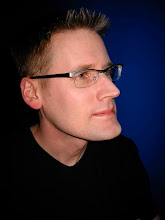In April 1998, I became a homeowner. Finally leaving years of rentals, my wife and I moved to an older house in Edina, built in 1913. And one of my "gifts" from my kind wife was a large room for my studio. Much larger than any room I had (except for the Death Star configuration of 1992 when I took over the center of a living room in a huge old apartment), but with a catch: There was a high traffic corridor bisecting the room. So the usable contiguous space in the studio was "just" a large L shape, not a full Rick Wakeman surround. Even a "U" configuration would be difficult. Some things would just have to go.
A couple of my things had gone in the months prior to us buying the house: We were making a full 20% downpayment, and there were a few thousand to be had by sloughing off some of my lesser used bits of gear. The Rhodes Chroma made its way out in 1997, going abroad to a nice man named Clive. The OB8 left even before that (I never truly bonded with that synth). The Simmons Drums had gone by 1996...
Around this time, a strange music store had opened in NorthEast Minnespolis: Wedged into the front half of a plumbing supply store, this outfit was one guy who always looked 3 hours short on sleep... but ALL he did was strange european things. See, by 1995, some crazy Swedes created a "Virtual Analog Synth" called the Nord Lead. And while I saw them all over the music magazines, nobody in Minneapolis had one. But this guy did. And it sounded great.... but not as great as my Jupiter8. And it only had 4 voices...
But it was only the beginning... the Europeans were coupling new DSP technology with old school user interface design, creating new synths that looked bold, sounded huge, but were easy and fun to use.
In Spring 1998, my guy got in a bit of gear that changed everything for me. He got an Access Virus. This was built by germans and had completely unreasonable specs: 16 voices, each with 2 oscillators. up to 16 different parts could be addressed, and routed to 3 stereo outputs. It had separate chorus and delay for each voice. And most importantly, it sounded INCREDIBLE - as good as my Jupiter 8 did to my ears.
And so I revisited my manifesto: I had got into these vintage synths because I was tired of the horrible user interfaces of the synths of 1990. I was tired of the digital sampled sound of those days, and the "play this preset" mentality. I moved to old synths not just because they sounded good, but because they had an immediacy to programming, AND because they were DIRT CHEAP during that brief window of time.
But by 1998, I was feeling the limitations as well: They were big and heavy and generated a lot of heat. They required lots of cables. They wandered out of tune, and never sounded quite the same from day to day. And frankly, I had used the hell out of them and was ready for some fresh sounds.
So yes, my friends, I traded my huge, heavy, beautiful Jupiter 8 for a tiny red box with knobs. Finally, new technology that sounded as good as my old stuff, but had a great user interface and was fun to use. The Access Virus had it all.
Within 4 months, everything else was gone, and in its place was one Fatar SL990 controller keyboard and five modules: A Roland JV1080, an Akai S5000, an Access Virus A, a Waldorf Microwave XT, and a Nord Lead 2. One MIDI interface, and two 8-channel audio snakes is all I needed. And it was incredible.
I tell you now, and you'll never believe me, but I didn't shed a tear for a single piece of that vintage gear... It wasn't until years later that I began to pine for the Jupiter 8 again. But everything else... It was ok. Some serious nerd was happier than I was with it. And The Good Guys (my repair shop) was considerably poorer without my regular visits.
Subscribe to:
Post Comments (Atom)




No comments:
Post a Comment